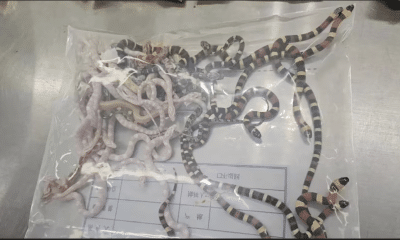Liquor & Spirits
Kentucky Whiskey Industry in Crisis: Multiple Distilleries File for Bankruptcy Amid Demand Slump and Mounting Debts
The legendary Kentucky whiskey industry, long considered a symbol of American craftsmanship and a multi-billion-dollar economic pillar, is facing a wave of financial turmoil. Several prominent Kentucky distilleries have filed for bankruptcy in recent months, as shifting consumer preferences, rising debts, and global trade uncertainties batter the once-booming spirits sector.
In the latest blow, LMD Holdings, the parent company of Luca Mariano Distillery based in Danville, filed for Chapter 11 bankruptcy in Michigan. Court documents reveal that the company is grappling with more than $25 million in liabilities. Owner Francesco Viola has stated that the filing aims to “maximize the value of assets for all stakeholders” and insisted that the company remains positioned for a turnaround with community and creditor support.
However, Luca Mariano is far from alone. Earlier this year, Garrard County Distilling, a $250 million independent venture that only commenced production in early 2024, was forced into receivership and ceased operations after failing to resolve its debt obligations. Similarly, Stoli Group USA, along with its Kentucky Owl whiskey brand, filed for bankruptcy in late 2024 following a devastating combination of falling demand and a cyberattack that crippled operations.
Even heritage labels like Wild Turkey have not been immune. The Campari Group, which owns Wild Turkey and Russell’s Reserve, reported an 8.1% decline in sales year-over-year in its latest earnings, pointing to a “soft trend” in the U.S. market for Kentucky bourbon.
The Golden Age of Indian Whiskey: A Market Poised for Premium Growth
The Kentucky Distillers’ Association estimates the state’s whiskey and bourbon distilleries industry is valued at over $9 billion, but these recent bankruptcies have sent shockwaves through the sector. Analysts point to several converging factors behind the downturn: inflation-strained consumers, a notable shift in younger demographics away from whiskey towards lighter spirits and cocktails, and the looming specter of tariffs that threaten key export markets.
Adding to the industry’s woes, major players are implementing aggressive cost-cutting measures. Brown-Forman, the parent company of Jack Daniel’s, announced in January that it would eliminate 12% of its global workforce and shut down a barrel-making facility in Louisville, Kentucky, in an effort to save up to $80 million annually.
“These are not isolated incidents,” said industry analyst Jeremy Shepherd. “We’re witnessing a systemic recalibration of the whiskey market. Overproduction, rising operating costs, and changing consumer habits are forcing even established brands to rethink their strategies.”
Victims’ advocates and local officials are voicing concerns over potential job losses and economic fallout in bourbon-centric communities that heavily rely on distillery tourism and whiskey-related commerce.
While some industry insiders believe this could be a cyclical correction, others warn that unless Kentucky’s whiskey producers innovate and adapt to evolving market demands, the sector could face prolonged stagnation.









































